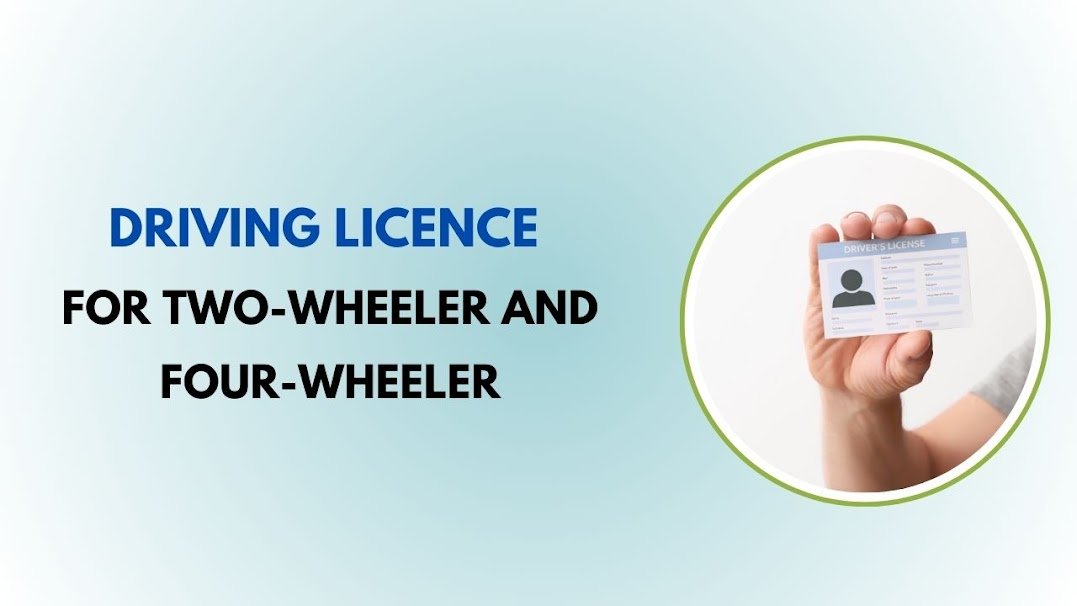In India, Driving Licence is an official document that gives you the legal right to drive a vehicle on the road. Whether you want to drive a two-wheeler like a bike or scooter, or a four-wheeler like a car, jeep, or van, you must have a valid licence. It is issued by the Regional Transport Office (RTO) under the Motor Vehicles Act, of 1988.
In this detailed guide, we will explain everything you need to know about getting a DL for both two-wheelers and four-wheelers. From its importance, types, eligibility, documents required, and step-by-step application process everything is covered in simple and easy language.
What is a Driving Licence?
A driving licence is an official certificate that proves a person is authorized to drive a particular type of vehicle in India. It acts as a legal permit and ensures that the driver knows the rules, understands road safety, and is capable of handling the vehicle responsibly.
Without a valid driving licence, driving on public roads is illegal and punishable by law.
Importance of a Driving Licence
Having a driving licence is important for many reasons:
- It is mandatory by law: As per Indian law, no one can drive without a valid driving licence.
- Proof of identity: It serves as identity proof for various legal and personal purposes.
- Road safety: It confirms that the driver knows traffic rules, signals, and safety regulations.
- Helps avoid penalties: Driving without a licence can lead to fines, legal action, or even imprisonment.
- Insurance claim validity: In case of accidents, having a valid licence is necessary to claim vehicle insurance benefits.
- Peace of mind: A licensed driver can drive freely without fear of legal problems.
Types of Driving Licences in India
Different types of licences are issued based on the type of vehicle. For two-wheeler and four-wheeler vehicles, the main types of licences are:
1. Learner’s Licence (LL)
A temporary licence is given to beginners. It is valid for 6 months. The learner should drive under supervision and display an ‘L’ sign on the vehicle.
2. Permanent Driving Licence
Issued after passing a driving test. It is valid for 20 years or till the age of 50 (whichever is earlier) and can be renewed later.
3. Commercial Driving Licence
Issued for driving commercial vehicles like taxis, auto-rickshaws, trucks, buses, and goods carriers. It requires special eligibility and medical fitness.
Eligibility for Driving Licence
To apply for a driving licence in India, you need to meet these basic conditions:
For Two-Wheelers:
- Minimum age: 16 years (with parental consent) for gearless two-wheelers up to 50cc.
- Minimum age: 18 years for two-wheelers with gear or more than 50cc.
- Must have a valid Learner’s Licence.
For Four-Wheelers:
- Minimum age: 18 years.
- Must have a valid Learner’s Licence.
For both cases, the applicant must know the traffic rules and regulations.
Documents Required for Driving Licence
You need to submit the following documents while applying for a driving licence:
Proof of Age (any one of these)
- Birth Certificate
- 10th Class mark sheet
- Aadhaar Card
- PAN Card
- Passport
Proof of Address (any one of these)
- Aadhaar Card
- Passport
- Voter ID
- Electricity bill
- Rent agreement
- Ration Card
Other Documents
- Learner’s Licence
- Passport-size photographs
- Medical certificate (Form 1A) for applicants above 40 years of age or a commercial licence
Having these documents ready makes the application process easier and faster.
Validity of Driving Licence
- For private two-wheelers and four-wheelers: 20 years from the date of issue or till the holder turns 50 years of age, whichever is earlier.
- For commercial vehicles: 3 to 5 years, depending on the vehicle type.
After expiry, the licence can be renewed by applying to the RTO.
Common Mistakes to Avoid While Applying
- Not carrying original documents to the test.
- Not practising enough before the driving test.
- Providing wrong or mismatched details in the form.
- Missing the test appointment or being late.
- Driving without displaying the ‘L’ sign during the learner’s licence period.
- Ignoring traffic signs and road rules during the test.
Tips for Passing the Driving Test
- Practice regularly in different traffic conditions.
- Understand basic traffic signs and road rules.
- Learn proper use of mirrors, indicators, and horns.
- Keep calm during the test.
- Drive within speed limits.
- Use proper hand signals when needed.
- Avoid sudden braking or speeding.
- Follow the examiner’s instructions carefully.
Suggested read- What is a Driving Licence
Conclusion
A driving licence is a very important legal document for every vehicle driver in India. Whether you ride a two-wheeler or drive a four-wheeler, you must have a valid driving licence to drive on Indian roads. It ensures your safety and that of others on the road.
The process to get a driving licence is simple and systematic. First, apply for a learner’s licence, then practice for a month, and finally appear for the driving test. If you clear the test, your driving licence will be issued.
Make sure to carry your licence while driving, follow road safety rules, and renew your licence before it expires. If you are eligible and ready, apply for your driving licence today and enjoy the freedom of driving legally and safely.











Leave a Reply